Hasedo Castle
-Another campaign in Eastern Japan (3) time’s up-
Overview
Name: Hasedo castle (Hasedo-jo)
Alias:
Place: Hasedo Yamagata city, Yamagata
Location: 38.21303833453051, 140.27078514871786
Type: Hill Castle
Built: 16th century
Remnants: Clay walls and dry moats
Title:
Continued from Part 2
Hasedo castle (長谷堂城) is located at Shiroyama hill, one of 80 meter height from hillside in the southwestern part of Yamagata city. This castle exist at southwestern corner of Yamagata basin, and also at the exit of the valley formed by Motosawagawa river.
This point is a connecting point of roads from Yonezawa basin passes Kotaki toge pass to central Yamagata area, and the one between Kaminoyama area and Sagae area runs along with western border of Yamagata basin. Beside, an independent handy size hill surrounded by marsh was a suitable place to build a castle.
Precise year is unknown but Hasedo castle might be built by the end of 15th century. At first it was a branch castle of Mogami clan, a traditioal clan stem from Shiba clan which was a close relative and high class retainer of Muromachi Shogunate, and appointed as a governor of western half of Tohoku region. Mogami clan placed their relative all over Yamagata basin, but later these branch families tried to leave the dominance of main family then Mogami clan significantly lost their power.
Among such situation, Date clan which was originally a local lord of Date providence where was the north part of current Fukushima prefecture, intruded and captured Yonezawa basin then became the strongest lord of region. Next Date clan aimed at Yamagata basin from southward, intruded into Yamagata basin and encircled Hasedo castle. Yoshisada Mogami (1492-1529), leader of Mogami clan, fought against Date army but suffered severe defeat, then Mogami clan lost Hasedo castle and had to surbordinate to Date clan. Many local retainers became independent, and it was a tough period for Mogami clan.
But in 1542, this time a severe internal conflict occurred at Date clan. Yoshimori Mogami (1521-1590), an adopted son of Yoshisada, retrieved Hasedo castle and left Date clan, then started to grow into the warlord of Yamagata basin. As the conflict against Date clan continued, Yoshimori and his son Yoshiaki Mogami (1546-1614) improved Hasedo castle into a secure base.
Hasedo castle is built over a tadpole like hill and surrounding area. Central area of the castle is a round shaped area of 50 meter diameter at the peak of the hill, surrounded by sheer slope. Secondary area of the castle is a long and narrow area of 80 meter long and 20 meter width where Hasedo Kannon Shrine exist, ahead of the ridge. Numerous terraces area built surrounding these central area and secondary area, to prevent climbing up of the enemy and use as a camping space of soldiers.
At hill top are there are only flat areas and almost no clay wall, but at the north and south of core area where connects to gentle ridge, clay walls and dry moats are built to prevent the entrance of enemy. Each entrance of the roads to hilltop area were protected by gate area. Total size of hilltop area is about 300 meter and 250 meter, and considering many terraces cover the hill, the capacity of this castle might be important to Mogami clan.
Additionally, this castle had an outer barrier outside of the hill, which total length is over 2 kilometer and protected all direction of the castle. This barrier consist of simple but huge clay wall and water moat, and had a projection point beside of its gate to prevent intrusion of enemy. This barrier included whole castle town, and outside of this barrier were marsh or paddy field.
In 1590, Yoshiaki Mogami and Masamune Date (1567-1636), the leader of Date clan, both subordinated to central ruler Hideyoshi Toyotomi (1537-1598). Under Toyotomi government Mogami clan could remain as a feudal lord, and Date clan was moved to current Sendai area, for the suspect of instigation of the rebellion of local people who lost their territory.
But in 1598, on the death of Ujisato Gamo (1556-1595) who was the lord of Aizu Wakamatsu castle at Yonezawa basin after Date clan, Kagekatsu Uesugi (1556-1623) moved to the large lord of Aizu basin and Yonezawa basin from Echigo province (Niigata prefecture). Kagekatsu placed his magistrate Kanetsugu Naoe (1560-1619) as the lord of Yonezawa castle (Yamagata prefecture), and even Kanetsugu himself had large territory than Mogami clan. Uesugi clan and Mogami clan had a substantial conflict for Shonai area in the west part of Yamagata prefecture, thus Kaminoyama castle became the front line again.
After the death of Hideyoshi Toyotomi, Ieyasu Tokugawa (1534-1582), the largest lord under Toyotomi government, and Mitsunari Ishida (1560-1600), a chief magistrate of Hideyoshi, fought for next hegemony. Yoshiaki Mogami and Date Masamune belonged to Ieyasu, but Uesugi clan was close to Mitsunari based on the friendship of Kanetsugu Naoe and Mitsunari Ishida.
In 1600, Uesugi clan refused disarmament and appearance order from Ieyasu, and Ieyasu started his campaign to Uesugi clan then marched toward Aizu region. Uesugi clan secured their border, and both Mogami clan and Date clan were ready to attack Uesugi clan from backside.
But utilizing absence of Ieyasu, Mitsunari raised his army against Ieyasu in cooperation with other large lords. Hearing this news, Ieyasu returned his army to west to confront with Mitsunari, leaving Uesugi clan. Looking at this situation Masamune Date quickly agreed with Uesugi clan, thus whole Uesugi army started invasion into Mogami territory lead by Kanetsugu Naoe in September. Now a large size campaign called as "Keicho Dewa Kassen" (Keicho Dewa campaign) had begun.
Kanetsugu planned to intrude into Mogami territory from three directions. The first was his main troop proceeds along with Mogamigawa river, across the hill and enter Yamagata plain from west side. The second troop goes the road to Kaminoyama area, the closest road to Yamagata area. Final one was a detached force from Shonai area, a distant territory of Uesugi clan. Main troop of Kanetsugu assaulted Hataya castle (Yamagata prefecture) and fell it in one day, and smoothly entered into Yamagata basin.
On the other hand, Mocami clan disposed small castles and concentrated its soldiers into their main base Yamagata castle and several major castles. Hasedo castle was one of such castles, and there were only about 1,000 soldiers lead by Mitsuyasu Shimura (?-1609), who was known for braveness and intelligence.
Main troop of Uesugi army consit of over 15,000 soldiers fell many castles gathered and next encircled Hasedo castle before the siege of Yamagata castle. As Hasedo castle is a connecting point of roads between Yonezawa castle, a strategic base of Kanetsugu, and Yamagata basin, and if Kanetsugu leave Hasedo castle and attack Yamagata castle, there was a fear of disturbance of Mogami army to the supply line. Furthermore, Yamagata castle was a huge castle and will take long time to fall it, thus Kanetsugu planned to encircle Hasedo castle and entice away Mogami army from Yamagata castle as a reinforcement to Hasedo castle.
In the middle of September, Uesugi army arrived at Hasedo castle and started siege toward outer barrier of the castle. Uesugi army had overwhelming number of soldiers, and it was desirable to make saturation attack. But Hasedo castle is wholly surrounded by muddy flat marsh or paddy field except for small path to the gate, and there was no dead angle from the castle. It was difficult to approach to the castle, then Uesugi army stayed at distant area and only consumed time.
Looking at this situation, Yoshihide Shimura and vice commander Hidetsuna Sakenobe (1563-1646) made a night attack by small force and gave a certain damage to Uesugi army. Angered Uesugi army made forcible attack to the castle but Morami army well bear this attack. In the meantime, Yoshiaki asked reinforcement to Masamune Date (1567-1636), his unfriendly nephew but might be next target of Uesugi army, and Masamune unwillingly sent army to assist Yoshiaki.
On the other hand, Uesugi army had supreme soldiers but fell into stalemate situation. As Kaminoyama castle (Yamagata prefecture) at the middle of closest road between Yonezawa castle and Yamagata basin still stood, thus it was impossible to bring sufficient supplies. In addition to the reinforcement of Date army, Yoshiaki which secured Yamagata castle also lead whole army and arrived.
To break the situation Kanetsugu made total attack again, but this attack failed again and Yasutsuna Kamiizumi (?-1600), a descendant of famous swordsman Nobutsuna Kamiizumi (1508-1577), and general of Uesugi army, died in this battle. As a result, Uesugi army could not fall Hasedo castle after two week attack.
In the meantime, it suddenly became time’s up. In September 15th, Ieyasu Tokugawa broke Mitsunari Ishida at the decisive battle of Sekigahara. Ieyasu seized the hegemony is expected to subjgate Kagekatsu again, and Uesugi clan might fall into severe situation. To secure their territory, Kanetsugu had to give up this campaign against Mogami clan and had to return to Yonezawa castle.
Looking at this situation, Yoshiaki Mogami and his army fiercely chased retreating Uesugi army. Kanetsugu himself served as rear guard of the army, intentionally choose the road between narrow valley and skillfully prevented Morami army and made counter attack.
Finally Kanetsugu was able to leave the battle field and return to Yonezawa castle with limited damage, then could show his talent which is not expressed at the siege of Hasedo castle. After that Uesugi clan agreed with Ieyasu and could survive as a feudal lord, even though its territory was decreased to Yonezawa area, one fourth from former territory.
After the battle Hasedo castle continuously worked as a branch castle of Mogami clan which became a large feudal lord held whole part of current Yamagata prefecture. But Mogami clan was expelled and lost the territory because of their internal conflict in 1622. Hasedo castle was abolished at this time, and later an administrative office was built at hillside.
Now all building is lost but layers of terraces are well kept their shape at hilltop area. In addition to this, outer barrier prevented severe attack of enemy was partially restored. Former marsh surrounded the castle hill disappeared and changed into houses, but from hilltop area former battle field is well seen. This series of struggle in which both of Uesugi clan and Mogami clan showed their tactics is becoming as an end of turbluent period in Tohoku region, and Hasedo castle also matches as a stage of last battle.
30 minutes walk from JR East Ou Honsen line Zao station. 20 minutes drive from Tohoku-Chuo Jidoshado Expressway Yamagata-Chuo interchange.
Yonezawa Castle -Castle filled with statues and monuments-
Hataya Castle -Another campaign in Eastern Japan (1) swift attack-
Kaminoyama Castle -Another campaign in Eastern Japan (2) miscalculation-
Type: Hill Castle
Built: 16th century
Remnants: Clay walls and dry moats
Title:
Brief History
Continued from Part 2
Hasedo castle (長谷堂城) is located at Shiroyama hill, one of 80 meter height from hillside in the southwestern part of Yamagata city. This castle exist at southwestern corner of Yamagata basin, and also at the exit of the valley formed by Motosawagawa river.
This point is a connecting point of roads from Yonezawa basin passes Kotaki toge pass to central Yamagata area, and the one between Kaminoyama area and Sagae area runs along with western border of Yamagata basin. Beside, an independent handy size hill surrounded by marsh was a suitable place to build a castle.
Origin of Hasedo castle
Precise year is unknown but Hasedo castle might be built by the end of 15th century. At first it was a branch castle of Mogami clan, a traditioal clan stem from Shiba clan which was a close relative and high class retainer of Muromachi Shogunate, and appointed as a governor of western half of Tohoku region. Mogami clan placed their relative all over Yamagata basin, but later these branch families tried to leave the dominance of main family then Mogami clan significantly lost their power.
Among such situation, Date clan which was originally a local lord of Date providence where was the north part of current Fukushima prefecture, intruded and captured Yonezawa basin then became the strongest lord of region. Next Date clan aimed at Yamagata basin from southward, intruded into Yamagata basin and encircled Hasedo castle. Yoshisada Mogami (1492-1529), leader of Mogami clan, fought against Date army but suffered severe defeat, then Mogami clan lost Hasedo castle and had to surbordinate to Date clan. Many local retainers became independent, and it was a tough period for Mogami clan.
But in 1542, this time a severe internal conflict occurred at Date clan. Yoshimori Mogami (1521-1590), an adopted son of Yoshisada, retrieved Hasedo castle and left Date clan, then started to grow into the warlord of Yamagata basin. As the conflict against Date clan continued, Yoshimori and his son Yoshiaki Mogami (1546-1614) improved Hasedo castle into a secure base.
Structure of Hasedo castle
Hasedo castle is built over a tadpole like hill and surrounding area. Central area of the castle is a round shaped area of 50 meter diameter at the peak of the hill, surrounded by sheer slope. Secondary area of the castle is a long and narrow area of 80 meter long and 20 meter width where Hasedo Kannon Shrine exist, ahead of the ridge. Numerous terraces area built surrounding these central area and secondary area, to prevent climbing up of the enemy and use as a camping space of soldiers.
At hill top are there are only flat areas and almost no clay wall, but at the north and south of core area where connects to gentle ridge, clay walls and dry moats are built to prevent the entrance of enemy. Each entrance of the roads to hilltop area were protected by gate area. Total size of hilltop area is about 300 meter and 250 meter, and considering many terraces cover the hill, the capacity of this castle might be important to Mogami clan.
Additionally, this castle had an outer barrier outside of the hill, which total length is over 2 kilometer and protected all direction of the castle. This barrier consist of simple but huge clay wall and water moat, and had a projection point beside of its gate to prevent intrusion of enemy. This barrier included whole castle town, and outside of this barrier were marsh or paddy field.
Premonition of upheaval
In 1590, Yoshiaki Mogami and Masamune Date (1567-1636), the leader of Date clan, both subordinated to central ruler Hideyoshi Toyotomi (1537-1598). Under Toyotomi government Mogami clan could remain as a feudal lord, and Date clan was moved to current Sendai area, for the suspect of instigation of the rebellion of local people who lost their territory.
But in 1598, on the death of Ujisato Gamo (1556-1595) who was the lord of Aizu Wakamatsu castle at Yonezawa basin after Date clan, Kagekatsu Uesugi (1556-1623) moved to the large lord of Aizu basin and Yonezawa basin from Echigo province (Niigata prefecture). Kagekatsu placed his magistrate Kanetsugu Naoe (1560-1619) as the lord of Yonezawa castle (Yamagata prefecture), and even Kanetsugu himself had large territory than Mogami clan. Uesugi clan and Mogami clan had a substantial conflict for Shonai area in the west part of Yamagata prefecture, thus Kaminoyama castle became the front line again.
After the death of Hideyoshi Toyotomi, Ieyasu Tokugawa (1534-1582), the largest lord under Toyotomi government, and Mitsunari Ishida (1560-1600), a chief magistrate of Hideyoshi, fought for next hegemony. Yoshiaki Mogami and Date Masamune belonged to Ieyasu, but Uesugi clan was close to Mitsunari based on the friendship of Kanetsugu Naoe and Mitsunari Ishida.
Outbreak of campaign
In 1600, Uesugi clan refused disarmament and appearance order from Ieyasu, and Ieyasu started his campaign to Uesugi clan then marched toward Aizu region. Uesugi clan secured their border, and both Mogami clan and Date clan were ready to attack Uesugi clan from backside.
But utilizing absence of Ieyasu, Mitsunari raised his army against Ieyasu in cooperation with other large lords. Hearing this news, Ieyasu returned his army to west to confront with Mitsunari, leaving Uesugi clan. Looking at this situation Masamune Date quickly agreed with Uesugi clan, thus whole Uesugi army started invasion into Mogami territory lead by Kanetsugu Naoe in September. Now a large size campaign called as "Keicho Dewa Kassen" (Keicho Dewa campaign) had begun.
Quick advance at the beginning
Kanetsugu planned to intrude into Mogami territory from three directions. The first was his main troop proceeds along with Mogamigawa river, across the hill and enter Yamagata plain from west side. The second troop goes the road to Kaminoyama area, the closest road to Yamagata area. Final one was a detached force from Shonai area, a distant territory of Uesugi clan. Main troop of Kanetsugu assaulted Hataya castle (Yamagata prefecture) and fell it in one day, and smoothly entered into Yamagata basin.
On the other hand, Mocami clan disposed small castles and concentrated its soldiers into their main base Yamagata castle and several major castles. Hasedo castle was one of such castles, and there were only about 1,000 soldiers lead by Mitsuyasu Shimura (?-1609), who was known for braveness and intelligence.
Main troop of Uesugi army consit of over 15,000 soldiers fell many castles gathered and next encircled Hasedo castle before the siege of Yamagata castle. As Hasedo castle is a connecting point of roads between Yonezawa castle, a strategic base of Kanetsugu, and Yamagata basin, and if Kanetsugu leave Hasedo castle and attack Yamagata castle, there was a fear of disturbance of Mogami army to the supply line. Furthermore, Yamagata castle was a huge castle and will take long time to fall it, thus Kanetsugu planned to encircle Hasedo castle and entice away Mogami army from Yamagata castle as a reinforcement to Hasedo castle.
Stubborn resist of Hasedo castle
In the middle of September, Uesugi army arrived at Hasedo castle and started siege toward outer barrier of the castle. Uesugi army had overwhelming number of soldiers, and it was desirable to make saturation attack. But Hasedo castle is wholly surrounded by muddy flat marsh or paddy field except for small path to the gate, and there was no dead angle from the castle. It was difficult to approach to the castle, then Uesugi army stayed at distant area and only consumed time.
Looking at this situation, Yoshihide Shimura and vice commander Hidetsuna Sakenobe (1563-1646) made a night attack by small force and gave a certain damage to Uesugi army. Angered Uesugi army made forcible attack to the castle but Morami army well bear this attack. In the meantime, Yoshiaki asked reinforcement to Masamune Date (1567-1636), his unfriendly nephew but might be next target of Uesugi army, and Masamune unwillingly sent army to assist Yoshiaki.
On the other hand, Uesugi army had supreme soldiers but fell into stalemate situation. As Kaminoyama castle (Yamagata prefecture) at the middle of closest road between Yonezawa castle and Yamagata basin still stood, thus it was impossible to bring sufficient supplies. In addition to the reinforcement of Date army, Yoshiaki which secured Yamagata castle also lead whole army and arrived.
Sudden time's up
To break the situation Kanetsugu made total attack again, but this attack failed again and Yasutsuna Kamiizumi (?-1600), a descendant of famous swordsman Nobutsuna Kamiizumi (1508-1577), and general of Uesugi army, died in this battle. As a result, Uesugi army could not fall Hasedo castle after two week attack.
In the meantime, it suddenly became time’s up. In September 15th, Ieyasu Tokugawa broke Mitsunari Ishida at the decisive battle of Sekigahara. Ieyasu seized the hegemony is expected to subjgate Kagekatsu again, and Uesugi clan might fall into severe situation. To secure their territory, Kanetsugu had to give up this campaign against Mogami clan and had to return to Yonezawa castle.
Looking at this situation, Yoshiaki Mogami and his army fiercely chased retreating Uesugi army. Kanetsugu himself served as rear guard of the army, intentionally choose the road between narrow valley and skillfully prevented Morami army and made counter attack.
Finally Kanetsugu was able to leave the battle field and return to Yonezawa castle with limited damage, then could show his talent which is not expressed at the siege of Hasedo castle. After that Uesugi clan agreed with Ieyasu and could survive as a feudal lord, even though its territory was decreased to Yonezawa area, one fourth from former territory.
Afterward of castle
After the battle Hasedo castle continuously worked as a branch castle of Mogami clan which became a large feudal lord held whole part of current Yamagata prefecture. But Mogami clan was expelled and lost the territory because of their internal conflict in 1622. Hasedo castle was abolished at this time, and later an administrative office was built at hillside.
Now all building is lost but layers of terraces are well kept their shape at hilltop area. In addition to this, outer barrier prevented severe attack of enemy was partially restored. Former marsh surrounded the castle hill disappeared and changed into houses, but from hilltop area former battle field is well seen. This series of struggle in which both of Uesugi clan and Mogami clan showed their tactics is becoming as an end of turbluent period in Tohoku region, and Hasedo castle also matches as a stage of last battle.
Access
30 minutes walk from JR East Ou Honsen line Zao station. 20 minutes drive from Tohoku-Chuo Jidoshado Expressway Yamagata-Chuo interchange.
Related Castles
Yonezawa Castle -Castle filled with statues and monuments-
Hataya Castle -Another campaign in Eastern Japan (1) swift attack-
Kaminoyama Castle -Another campaign in Eastern Japan (2) miscalculation-













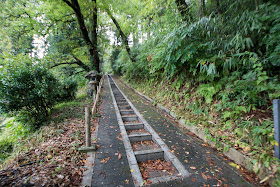







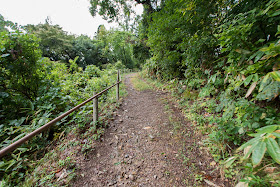











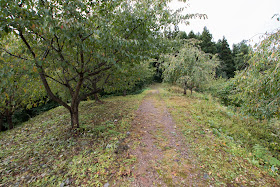











































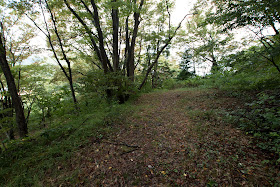

















































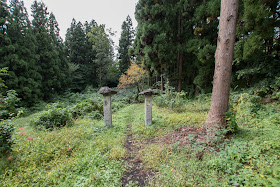
































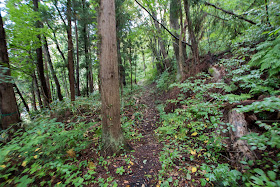


















































No comments:
Post a Comment